Alter ego Hugo Strange Fictional universe DC Universe | Created by Bill FingerBob Kane | |
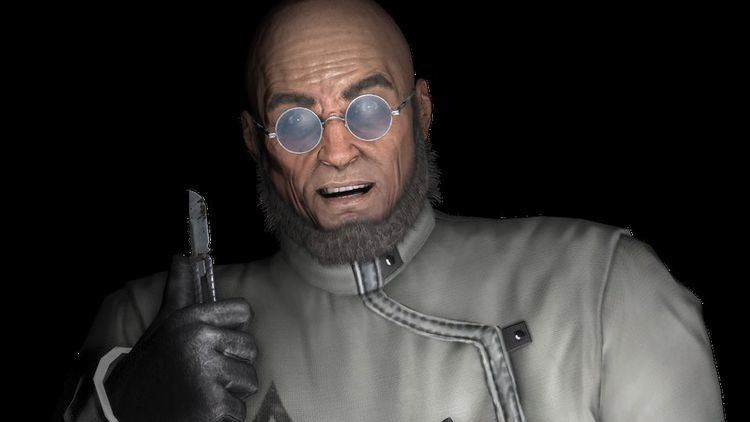 | ||
Notable aliases Batman, Dr. Victor Absonus Abilities Genius-level intellectTrained in psychology, chemistry, and biology Similar Mr Freeze, Penguin, Azrael, Fish Mooney, Mad Hatter | ||
Who is hugo strange
Hugo Strange is a fictional supervillain appearing in American comic books published by DC Comics, commonly as an adversary of the superhero Batman. He is one of Batman's first recurring villains. Hugo Strange is also the first Batman villain to deduce the hero's secret identity.
Contents
- Who is hugo strange
- Batman arkham city hugo strange ra s al ghul cutscene ps3
- Publication history
- Pre Crisis
- Earth Two
- Post Crisis
- The New 52
- DC Rebirth
- Batman 66
- Television
- Film
- Video games
- Arkham series
- References
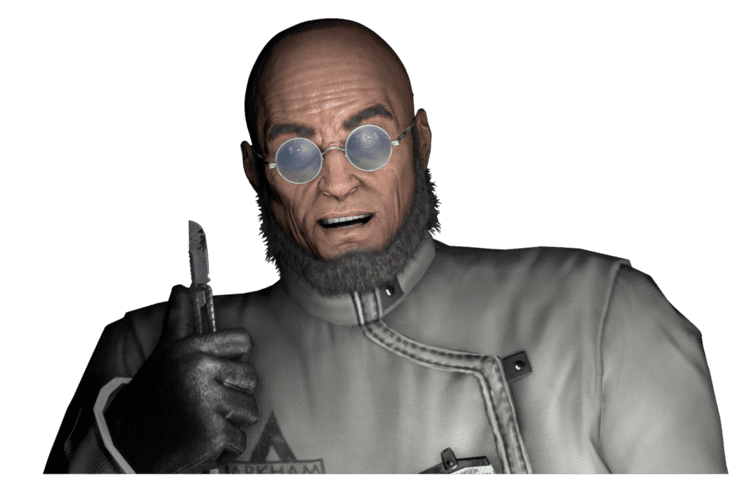
Batman arkham city hugo strange ra s al ghul cutscene ps3
Publication history
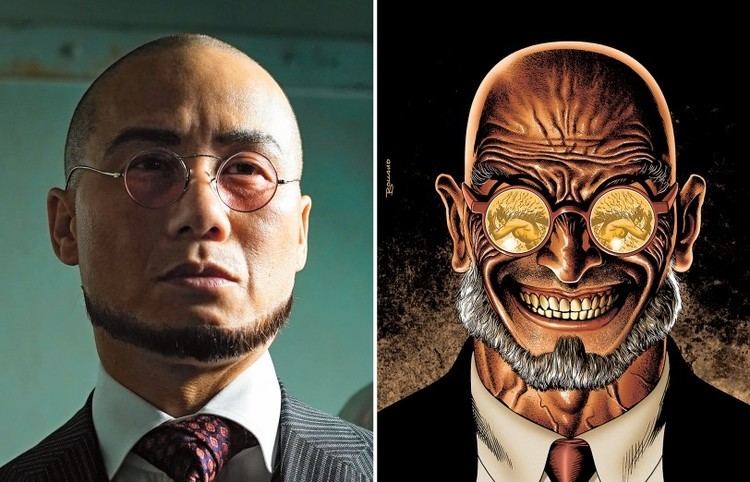
Hugo Strange first appeared in Detective Comics #36 (February 1940) and was created by Bill Finger and Bob Kane.
Pre-Crisis
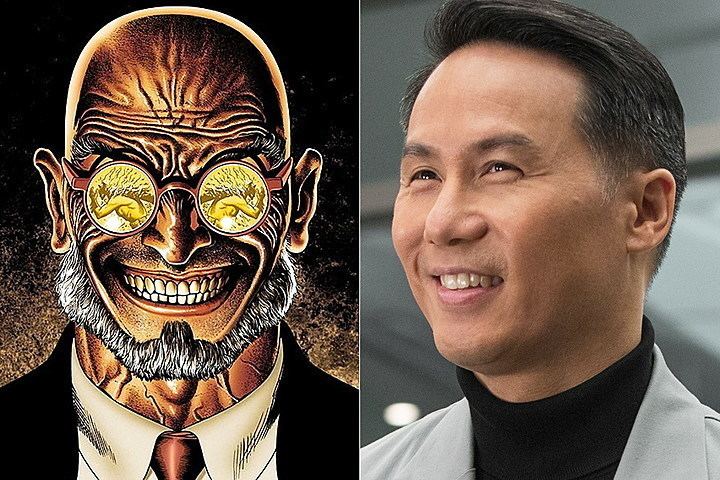
Hugo Strange first appears as a scientist who uses a stolen "concentrated lightning" machine to generate a dense fog every night, allowing his gang such as the E-sida to rob banks unseen, though he knows Batman poses a threat to him. Batman, who already knows of Strange's experiments, begins investigating him after one of his henchmen kills a man. When his henchmen are apprehended, Strange vows to set a trap for Batman as the next target on the list. When Batman arrives, over a dozen of Strange's men are waiting for him, and one of them knocks him out with a blackjack. He wakes up in Strange's lair, where Strange hangs him from his wrists and lashes him with a whip. Batman breaks the ropes, gasses the room, and tackles Strange, who is jailed but plans to escape. In Hugo's second appearance he escapes from the "city asylum" with a gang of criminals, then breaks out "five insane patients" and uses them as test subjects, turning them into hulking 15 ft zombies by administering a powerful artificial growth hormone that acts on the pituitary gland. They wear bulletproof clothing, and he releases them to wreak havoc in Gotham City while his men commit robberies. Strange administers the serum to Batman after the giants capture him, saying it will work in 18 hours. Batman tricks two of the monsters into killing each other, and then saves himself by creating a drug that prevents any abnormal secretions from the pituitary gland. He is then able to kill all the other monsters, and sends Strange to his apparent demise, although he suspects that the mad scientist has survived. In Detective Comics #46 Strange starts spreading a fear-inducing powder around the city until a punch from Batman sends him falling to his apparent death.
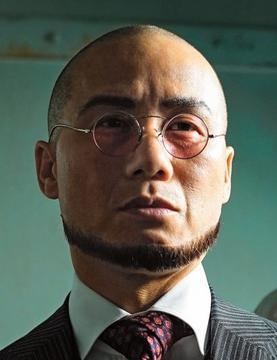
He returned in the 1970s during the "Strange Apparitions" story arc. Having survived his earlier "death", Strange is running a private hospital for Gotham's wealthiest citizens—where he holds them to ransom and changes them into monsters. When Bruce Wayne checks into the hospital to recover discreetly from radiation burns he sustained while fighting Doctor Phosphorus, Strange finds out that Wayne is Batman and proceeds to wreak havoc on his personal life. Strange then attempts to auction the identity of Batman to City Council Boss Rupert Thorne, Penguin, and Joker. Thorne has Strange kidnapped and beaten to reveal Batman's identity, but Strange apparently dies before he can tell them. Strange's ghost comes back to haunt Thorne, driving the council boss insane. Thorne confesses his long career of corruption and is sent to prison.
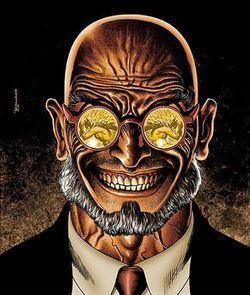
As revealed in Batman #356 (Feb. 1983) Strange had indeed survived the beating from Thorne's men, by using yoga to slow his heartbeat to an undetectable level. Strange created the 'ghost' that haunted Thorne which drove him to confess to the authorities. Subsequently, Strange attempts to weaken Bruce Wayne through the use of drugs and robots, with the ultimate goal of usurping the mantle of Batman. The plan fails, and Strange apparently dies once more when he blows up a replica of Wayne Manor.
Earth-Two
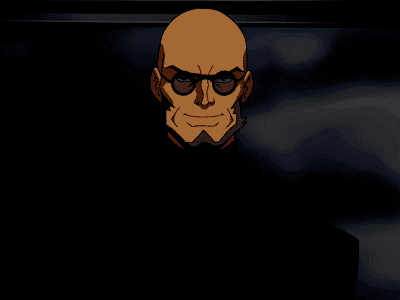
The Earth-Two version of Strange also survives the fall he experienced. He is left paralyzed but after years of physical therapy, he regains enough movement to write out the surgical techniques needed to repair the damage to his body – and bribes a surgeon to perform the operation. The surgeon lacks Strange's skill, and the operation leaves Strange physically deformed (the surgeon dies for his failure). Strange uses one of his devices to capture Starman's cosmic rod, to use its power to attack everyone and everything Batman holds dear. He generates a storm in Gotham to obtain the device, which creates a dimensional doorway to Earth-One, bringing that universe's Batman over to Earth-Two and allows him and that world's Robin to join with the original Batwoman in defeating Strange. Strange realizes that he is in fact angry at his own wasted life and deformed body. Strange then uses the Cosmic Rod to commit suicide. (The Brave and the Bold #182, January 1982)
Post-Crisis
In the Post-Crisis continuity, Strange was reintroduced in the "Prey" arc as a psychiatrist enlisted to help a police taskforce capture Batman. While brilliant at his work, Strange is depicted as being equally unbalanced: He is so obsessed with Batman, he takes to dressing up like Batman, in private. Strange ends up raising the stakes against Batman, by brainwashing a police officer into becoming a violent vigilante, framing Batman for kidnapping the Mayor's daughter, and deducing Batman's true identity as Bruce Wayne. Batman foils Strange's plot and forces him to doubt his own conclusion about his true identity, before he can share it with anyone else.
According to Commissioner James Gordon, Strange was "abandoned as a child, grew up in state homes. A bright kid, but he apparently had a hell of a temper. Nobody knows how he put himself through college and medical school." He was raised in an orphanage on the lower East Side of Gotham, not far from the infamous "Crime Alley", in the heart of a part of Gotham known as "Hell's Crucible". Strange became professor of Psychiatry at Gotham State University, but had his tenure suspended due to his increasingly bizarre genetic engineering theories. At some point, he is approached by an Indian man named Sanjay, who seeks Strange's aid in curing his sick brother. Strange agrees to help, and Sanjay works loyally by his side from that point onward. Borrowing money from gangster Sal Maroni, who is in the employ of Gotham's criminal kingpin Carmine Falcone, Strange sets up a lab. He then bribes a corrupt orderly to give him incurably insane inmates from Arkham Asylum—who have been institutionalized so long that they will not be missed.
Strange's experiments have literally monstrous results, with his test subjects turning into gigantic, mindless "Monster Men", possessing superhuman strength and cannibalistic instincts. Strange uses these Monster Men to raise the money he needs to pay back his Mafia connections. Batman becomes involved after discovering some of the gruesome remains of the Monster's Men's cannibalistic rampages. When Strange sets his creations free at an illegal poker game, helping himself to the victims' money after the slaughter, his Mafia connections begin to grow suspicious. Batman tracks Strange down, but is captured by Sanjay and thrown to the Monster Men as an intended meal. Batman not only holds off the creatures, but uses them in part of an inventive escape. Strange is enthralled by Batman, believing that he has found a genetically perfect man. He creates one final Monster Man using a drop of Batman's blood, and while his creation still has many of the flaws of its "brothers", it lacks most of the grotesque disfigurements that had plagued Strange's earlier work. Strange is forced to destroy his lab in order to evade capture. Soon after, he turns the Monster Men loose, including Sanjay's brother (who had been mutated in a failed attempt to cure him), at Falcone's estate, where Strange's Mafia connections are staying. Strange wants a fresh start, and realizes that the Mafia is still a link to his experiments. In the battle that follows, all of the Monster Men are killed, along with Sanjay (who was attempting to avenge his brother). Strange escapes amid the chaos, and succeeds in eradicating all links between himself and his experiments. Confident that he can not be linked to them, he begins to appear on TV as a psychological expert on the Batman.
It is possible that the events of Doug Moench and Paul Gulacy's "Prey" story arc take place at this point. Partly due to Hugo Strange's appearance on TV as a psychological expert, Captain Gordon is ordered to assemble a task force to capture Batman (with Strange working as a consultant to it, to deduce Batman's secret identity). As the task force's investigation progresses, Strange grows increasingly maniacal in his obsession with Batman, going so far as expressing a desire to become Batman and dressing up in a replica Batsuit. To that end, Strange attempts to kill the Caped Crusader and permanently replace/impersonate him. However, Strange repeatedly underestimates the level of physical conditioning needed to be Batman (e.g., incorrectly theorizing that Batman was driven into activity by a personal tragedy suffered within just the past 5 years -- while Gordon already knows that a lifetime of training would really be required). Strange also diagnoses Batman with various personality disorders (e.g., explaining Batman's use of a costume as symptomatic of multiple personality disorder -- whereas Gordon more accurately explains the Batsuit's intended purpose as, 'scaring the pants off criminals'). Strange eventually: concludes that Bruce Wayne is most likely Batman; brainwashes the task force's commander into becoming a lethal vigilante, as part of a plot to turn public sentiment against Batman; and, kidnaps the mayor's daughter. Despite Strange's attempt to psychologically 'break' Batman (by creating recordings and mannequins of Thomas and Martha Wayne, blaming Bruce for their deaths), Bruce is able to collect himself and focus in the Batcave (where he confronts Strange and tricks Strange into doubting his own hypthesis about Batman's secret identity). Strange is ultimately apprehended, shot twice by the task force (when he attempts to escape -- dressed in his replica Batsuit), and dumped into a river. (Once again,) Hugo Strange is presumed dead.
In Doug Moench's "Terror" storyline, Strange mysteriously comes back. He decides to work with another of Batman's enemies, the Scarecrow, and use him as a tool to help him capture Batman, while simultaneously having fallen into a further delusional state as he engages in a 'relationship' with a female mannequin in Batman's cowl, reflecting his warped dual admiration and loathing of Batman. Scarecrow turns on Strange when Strange's therapy proves effective enough to turn Scarecrow against his 'benefactor', impaling him on a weather vane and throwing him in the cellar of his own mansion. The Scarecrow then uses Strange's mansion as a trap for Batman, but his attempt to use Strange's plan fails when he only learns of Strange's plan to use Crime Alley as the scene of a trap while ignorant of the reasons why that alley is so significant to Batman, with his 'trap' merely consisting of luring Batman into the alley and decapitating a former classmate of Crane's. With Catwoman's help, Batman locates Scarecrow's hideout and catches Scarecrow in the cellar with Strange's body before the house is destroyed in a fire, but loses sight of Strange, with it being unclear whether Strange had actually survived the fall onto the weather vane- he claimed that he lured rats to himself by using his sweat so that he could eat them- or if Scarecrow and Batman were hallucinating from exposure to Crane's new fear-gas, although Batman concludes that the subsequent explosion of the house has definitely killed Strange.
Both "Prey" and "Terror" are set during Batman's early years. In the modern timeline, Strange returns in a four-part arc that ran through Gotham Knights #8–11. He is posing as a psychiatrist doing standard stress evaluations at Wayne Enterprises. While Bruce Wayne is on the couch, Strange drugs him with a powerful hallucinogen in order to coax Wayne into admitting that he is Batman. Batman escapes and triggers a post-hypnotic suggestion in himself, forcing him to completely repress the Batman aspect of his mind until Robin and Nightwing can thwart Strange. Believing that his theory that Bruce Wayne is Batman has been disproved, and that he may have actually killed Batman, Strange has a mental breakdown and is taken to Arkham Asylum.
Following that, Strange reappears as the head of a gang of super-criminals attempting to take control of Gotham's East Side, then controlled by Catwoman. Catwoman joins Strange's gang, then allows its members to "find out" that she intends to betray them, faking her death when they attempt to eliminate her. Although she defeats and imprisons most of the gang, and even convinces Strange to leave the East Side alone, Strange still mocks her by pointing out that he had faked his own death far more often than she had.
In Batman #665, Batman tells Tim Drake that a huge man dressed like a combination of Bane and Batman had beaten him up, and he suspects the imposter had used "Hugo Strange's Monster Serum and Daily Venom shots" to gain his size and strength.
In the series Gotham Underground, Strange is associating with other villains such as the Mad Hatter, Doctor Death, and Two-Face. Strange and the others are rounded up by the Suicide Squad.
Strange takes part in the limited series Salvation Run. He is amongst the villains imprisoned on another planet.
Strange appears in The Batman Adventures, which is set in the DC Animated Universe. Issues 35 and 36 of the comic book provide him with a tragic backstory: he witnessed the murder of his son David by mob boss Rupert Thorne, and was so overcome with grief that he sought to literally erase the memory with his mind control technology. The plan backfired, however; following the experiment, he could remember nothing but his son's death. After Batman stops him from killing Thorne, Strange is imprisoned in Arkham Asylum.
The New 52
The New 52 (a reboot of the DC Comics universe) introduces the reader to his son Eli Strange for the first time, playing poker with the Russian Mob. Eli is first seen playing a game of poker with the Russian mob, betting a valuable bracelet, winning big and cleaning house. Before he can walk away with his winnings, the mobster forces him to play another hand, in which he discovers Eli's sleeve loaded with cards. Before he can give the order to have him killed, the mobster's thugs realize their bracelet (Eli's was a fake replica) had been stolen, Catwoman pounces from the ceiling and takes out the entire group of criminals. She thanks Eli for being her distraction (the two having been working together the entire time) and tells him to run home to his father, which he is last seen doing.
Later, Hugo Strange uses Eli to oversee an operation to dose Gotham with Fear Gas. Scarecrow led Batman to believe that a small boy in a picture would be harmed unless he put a stop to it. Arriving at the scene, Batman realizes that the small boy was actually Eli. He manages to avert the disaster and Eli is arrested.
During the Forever Evil storyline, Hugo Strange is among the villains recruited by the Crime Syndicate to join the Secret Society of Super Villains.
DC Rebirth
Hugo Strange appears in the DC Rebirth during the Night of the Monster Men crossover event.
Batman '66
Hugo Strange is initially a psychiatrist at the Arkham Institute, until being revealed as a villain in Batman '66 meets the Man from U.N.C.L.E..
